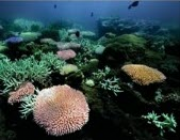NESP TWQ Round 4 - Project 4.4 - The traits of corals that survived recent bleaching events
The past two years have seen unprecedented coral bleaching on the GBR but the consequences on biodiversity and genetic diversity are not yet known. This project will address the following questions:
- Has bleaching resulted in a loss of genetic diversity in three coral species?
- Do surviving populations contain genetic signatures of adaptation to bleaching temperatures?
- What is the prevalence of heat tolerant photo-symbionts within surviving corals and in the environmental pool?
- Are heat tolerant Symbiodinium communities and host genetic variants correlated with ambient environmental and recent bleaching conditions?
High throughput genomic sequence variance analysis will identify genes in corals and Symbiodinium types associated with bleaching tolerance. Through correlations with environmental variables we will develop a spatially explicit understanding of the distribution and abundance of stress tolerant coral genes and symbionts (in hospite and free-living) to identify key coral populations for protection, key reefs for resilience management and potential breeding stock for use in reef restoration activities.
Datasets

This dataset is the genome assembly of the staghorn coral Acropora millepora. Tissue samples were collected along the Central Great Barrier Reef during the 2017 mass bleaching event. Tissue was collected from a range of individual exhibiting both bleaching and non-bleaching phenotypes. A range of phenotypic analysis were conducted and linked to the genomic sequencing data provided here. The A.millepora genome (Scaffold N50 =1.23 Mb) draft assembly was constructed from a combination of PacBio and Illumina paired-end reads with 10X Genomics barcodes.
Methods:






